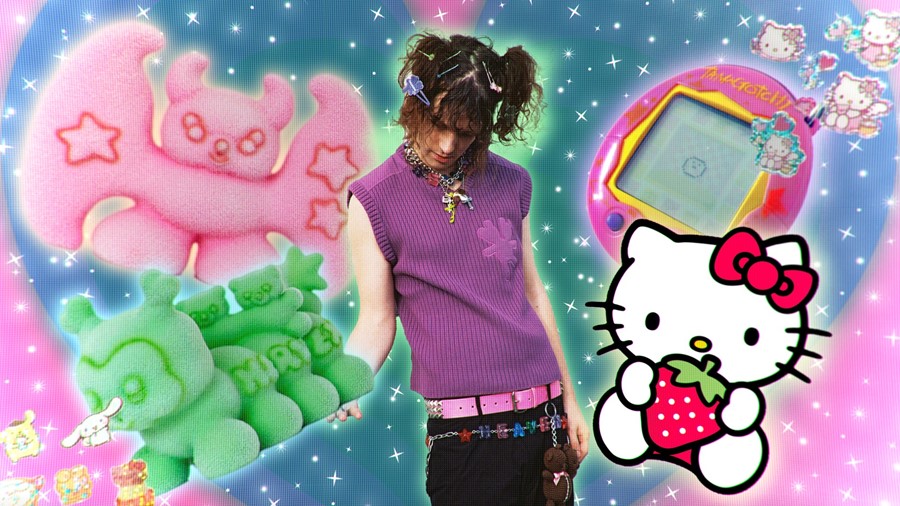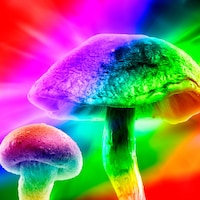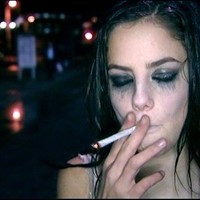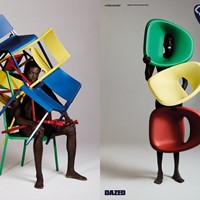From Marc Jacobs’ Heaven to the return of 00s subcultures, Drain Gang’s sonic optimism, and PC Music’s sugary sound, cute aesthetics are an extension of our obsession with Y2K – and a distraction from the real-world
We live in a time when nostalgia is prime cultural currency. Cutesy, child-like drawings adorn our Instagram feeds, while brightly coloured clothes and stuffed animal accessories by the likes of Marc Jacobs’ Heaven and Ashley Williams reveal a restless nostalgia for Y2K. Online, alt kids don cat ears and yeti boots and press play on Drain Gang’s sonic optimism; they dangle Tamagotchis off keychains and tune into PC Music, its sugar rush sound doubling as a welcome distraction from the real world.
Cute aesthetics have existed online forever (see: Deviant art, Tumblr), yet its latest proliferation in the mainstream can be traced back to our collective obsession with Y2K. A post-vibe shift move away from the austere ‘That Girl’ image, and a logical extension of pandemic-induced wellness trends such as cottagecore, people want to shed the myth of self-optimisation and girlbossery and embrace their inner child via butterfly stickers, love hearts, and Sanrio characters. The pandemic has taught us that no number of daily affirmations and plant-based milks can make the world any less of a shitshow that it already is, so we might as well rewind to what makes us really happy: the cutesy characters of the 90s and 00s.
Of all the ways in which cutesy aesthetics are making a mark on the mainstream, the most prolific is Marc Jacobs’ latest line Heaven, which translates the designer’s irreverent take on fashion for a new generation with its modern interpretation of 90s grunge and rave. The brand is known for collaborating with artists that embody this kawaii approach, from Chinese artist Nhozagri’s weird and wonderful stuffed animals to the brand’s coveted double-headed bear, which was created in partnership with German toymaker Steiff. Original Claire Barrow illustrations depicting playful doodles of dinosaurs and amorphous creatures feel like they’ve been plucked from the recesses of a child’s imagination, while limited-edition sculptures by Japanese artist Ancoo resemble pastel-hued cherubs rendered in endearingly blobby forms.
The attention to cutesy visuals isn’t simply limited to artist collaborations, but rather embodies the brand’s entire approach, from campaigns to talent and beyond. A recent campaign starring Drain Gang’s Bladee, for example, sees the musician in a pixelated videoscape. Surrounded by digital critters that resemble the tiny Chao garden in Sonic the Hedgehog, it’s already an extension of the artist’s image, which merges lo-fi and alt Y2K aesthetics. Sonically, the group’s Extremely Online strain of bubblegum pop is mixed together with existential-lite lyrics to convey an attitude of youthful nihilism. It evokes the same child-like feeling as looking at an artwork by Nhozagri or Ancoo, as if simultaneously looking back at the past with rose-tinted glasses and mourning its loss.
Bladee’s paintings also exude this ketaminic brain melt, with depictions of introspective dreamscape worlds that tie together sprawling, child-like forms with sinister undertones, as if to depict that lost innocence. Yung Lean, whose decade-spanning career has both inspired and been inspired by Drain, is also a big driver behind these aesthetics: the Stockholm artist is obsessed with children’s doodles, recently dropped a range of plushies, and even has Disney’s Pluto tattooed onto his neck.
Much of this aesthetic is, of course, a rehash of the radical street style of 90s Harajuku kids, as well as a youthful nostalgia for filmmaker Gregg Araki and Fruits magazine – both Heaven collaborators – who are now being discovered by a new generation of terminally online kids. We see this on TikTok and Instagram, on the streets and in the basements of alt club nights, with e-girls and art school grads wearing animal ears and brightly coloured hair, short skirts and leg warmers. The online revival of 00s subcultures, like emo and scene kids, also hints at how people are becoming bolder and braver with their fashion choices.
“After lockdown, people want to embrace fun, cute and colourful energy a lot more after a long period of being inside and not being able to express themselves” – Hysteric Fashion
This is partially down to remix culture, as the internet makes information from across history available to us all at once. As early web nostalgia increases, more people are mining old photo-sharing sites like MySpace and Flickr for style inspiration. “After lockdown, people want to embrace fun, cute, and colourful energy a lot more after a long period of being inside and not being able to express themselves,” says Daisy Davidson, the person behind the Hysteric Fashion Instagram account, which shares pictures of Japanese street style, plus images of emo and scene kids found on online forums and blogs such as Flickr. “I think a lot of it comes from nostalgia and childhood memories, be that a cartoon we used to like watching as a kid, an old manga, or even a memory of a cute jumper we used to wear!”
Like other current internet trends, such as feral club rat and goblin mode, cuteness – and its embrace of primal yet innocent forms – harks back to a pre-human state of existence. It taps into our primitive attraction to faces, large eyes, and soft rounded edges. “Early animators understood that anything can be imbued with emotion – even a clock can cry, even a candlestick can dance and sing,” says Emma Pryde, a Wisconsin-based artist whose work pulls on themes of 90s girlhood and early internet aesthetics. “It’s an alchemical process. If something moves in a way that imitates and exaggerates reality, it can gain sympathy from an audience.”
It makes sense that we imbue inanimate objects with a similar emotional weight to living creatures, especially after two years spent starved of human contact. During this time, we turned to the comfort of fantasy worlds via videogames, streaming, and social media to make sense of – and escape from – an unreal present. This fantasy world has since leaked into our reality as fashion gets bolder and online gaming apps such as Discord and Twitch take an active role in shaping the ways we experience community post-pandemic. (Discord servers host a broad range of memetic communities, while content creators are adopting Twitch streams to engage in new ways with their audiences.)
“Childlike aesthetics, or the veneer of the cute or innocent, seems to be a reaction to trauma. In the 20th century, cute aesthetics gained popularity during distressing times, such as during world wars and massive crises,” says Pryde, who points to the golden age of American animation, which arose out of the Great Depression in the 1930s, and saw the birth of cultural icons such as Mickey Mouse and Snow White. The COBRA movement in the late 1940s similarly drew inspiration from children’s drawings and primitive art forms. A response to the severity of the second world war, artists in the movement wanted to, as de facto leader Karen Appell described, “start again like a child”, so combined bold, primary colours with basic forms and brash linework to create a feeling of unfettered freedom. The popularity of cute aesthetics post-pandemic mirrors this sentiment. “People seek comfort and distraction in response to suffering, turning to that which appears to be harmless,” adds Pryde.
“People seek comfort and distraction in response to suffering, turning to that which appears to be harmless” – Emma Pryde
Cuteness, she explains, is also a reaction to our cultural obsession with a sexualised idea of youth and girlhood – as popularised by the likes of the Kardashians and Euphoria. “These aesthetics produce warped expectations about human bodies and behaviours, and assert an underlying message that artificiality and submissiveness are attractive qualities,” Pryde agrees. Swapping out this sexualised aesthetic with something proudly childlike and innocent therefore offers up an alternative version of femininity stripped of damaging media narratives.
Perhaps cute animations, cartoon characters, and toys are a reaction to the trauma experienced during the pandemic. Or, maybe it’s a backlash towards neoliberal ideas of femininity. But, by embracing innocent forms, we cast our minds back to a simpler time before adult responsibilities and global pandemics; when we had no problems, only a wild and roving imagination. These feelings are, of course, rooted in an idealised past that never existed. “Nostalgia is often used to distort perception and manipulate people into believing that the world was once safe,” says Pryde. Yet the shiny plastics world of the 90s and 00s, presented through this nostalgic lens, are a direct contrast to our scorched present.




